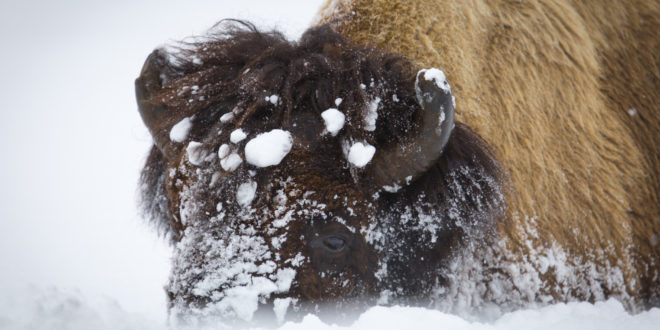Quarantined Yellowstone bison are finally headed to the Fort Peck Indian Reservation, as an agreement to transfer bulls reached last year finally comes to fruition.
The five quarantined Yellowstone bison have already tested negative for brucellosis and will undergo further testing after quarantine at the Fort Peck Indian Reservation. This shipment is expected to be followed by several others, as currently 80 or so bison are quarantined by Yellowstone officials.
There are multiple goals to this agreement between the National Park Service and the Fort Peck Indian Reservation. First, state and federal officials see this as a way to cut down on the number of bison slaughtered in the name of overpopulation. Second, it’s a way for the Fort Peck Indian Reservation to create a breeding stock for its own bison population efforts. Third, it’s seen as a way to create a working quarantine program, with the process beginning in Yellowstone and eventually ending at the Fort Peck Indian Reservation. The reservation had already invested in a $500,000 quarantine facility, and the goal is to fully utilize this investment.
Whether or not the quarantine is necessary is a matter of debate: a large percentage of the Yellowstone bison herd has been infested with brucellosis, which can cause cattle to spontaneously abort a fetus. But there’s never been a documented case of bison transmitting brucellosis to cattle, with the more likely cause of infection being local elk herds. Still, with brucellosis still a concern among Montana stockmen, state and local officials are especially diligent in planning. From the Bozeman Daily Chronicle:
Marty Zaluski, Montana’s state veterinarian, said a Department of Livestock official will seal the trailer once the bulls are loaded. He also said the trailer will be locked during the drive and will be reopened by a government official on the other end.
“Every time these animals complete this arduous process we’re happy to see them transferred to folks that want them,” Zaluski said.
The animals will be tested for brucellosis six months after arrival. A final test comes after another six months. If those tests come back negative, state and federal officials will consider the animals brucellosis-free.
RELATED STORIES: Conservation Groups Call for Livestock Producers to Manage Brucellosis
 Yellowstone Insider Your Complete Guide to America's First National Park
Yellowstone Insider Your Complete Guide to America's First National Park





